Related Research Articles
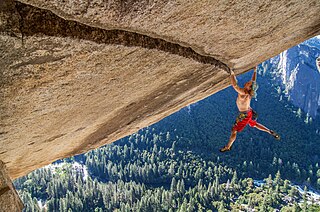
Climbing is the activity of using one's hands, feet, or other parts of the body to ascend a steep topographical object that can range from the world's tallest mountains to small boulders. Climbing is done for locomotion, sporting recreation, for competition, and is also done in trades that rely on ascension, such as rescue and military operations. Climbing is done indoors and outdoors, on natural surfaces, and on artificial surfaces

Mountaineering, mountain climbing, or alpinism is a set of outdoor activities that involves ascending mountains. Mountaineering-related activities include traditional outdoor climbing, skiing, and traversing via ferratas that have become sports in their own right. Indoor climbing, sport climbing, and bouldering are also considered variants of mountaineering by some, but are part of a wide group of mountain sports.

Many climbing routes have a grade that reflects the technical difficulty—and in some cases the risks and commitment level—of the route. The first ascensionist can suggest a grade, but it will be amended to reflect the consensus view of subsequent ascents. While many countries with a strong tradition of climbing developed grading systems, a small number of grading systems have become internationally dominant for each type of climbing, which has contributed to the standardization of grades worldwide. Over the years, grades have consistently risen in all forms of climbing, helped by improvements in climbing technique and equipment.

The International Climbing and Mountaineering Federation, commonly known by its French name Union internationale des associations d'alpinisme, was founded in August 1932 in Chamonix, France when 20 mountaineering associations met for an alpine congress. Count Charles Egmond d'Arcis, from Switzerland, was chosen as the first president and it was decided by the founding members that the UIAA would be an international federation which would be in charge of the "study and solution of all problems regarding mountaineering". The UIAA Safety Label was created in 1960 and was internationally approved in 1965 and currently (2015) has a global presence on five continents with 86 member associations in 62 countries representing over 3 million people.

The eight-thousanders are the 14 mountains recognised by the International Mountaineering and Climbing Federation (UIAA) as being more than 8,000 metres (26,247 ft) in height above sea level, and sufficiently independent of neighbouring peaks. There is no precise definition of the criteria used to assess independence, and at times, the UIAA has considered whether the list should be expanded to 20 mountain peaks by including the major satellite peaks of eight-thousanders. All of the eight-thousanders are located in the Himalayan and Karakoram mountain ranges in Asia, and their summits lie in an altitude known as the death zone.

Ice climbing is a climbing discipline that involves ascending routes consisting of frozen water. To ascend the route, the ice climber uses specialist equipment, particularly double ice axes and rigid crampons. To protect the route, the ice climber uses steel ice screws that require skill to employ safely and rely on the ice holding firm in any fall. Ice climbing routes can vary significantly by type, and include seasonally frozen waterfalls, high permanently frozen alpine couloirs, and large hanging icicles.

Rock-climbing equipment varies with the type of climbing undertaken. Bouldering needs the least equipment outside of shoes and chalk and optional crash pads. Sport climbing adds ropes, harnesses, belay devices, and quickdraws to clip into pre-drilled bolts. Traditional climbing adds the need for carrying a "rack" of temporary passive and active protection devices. Multi-pitch climbing adds devices to assist in ascending and descending fixed ropes. And finally aid climbing uses unique equipment.
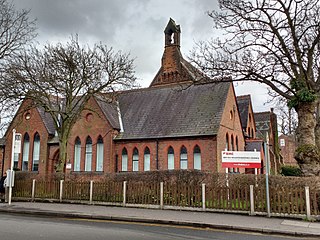
The British Mountaineering Council (BMC) is the national representative body for England and Wales that exists to protect the freedoms and promote the interests of climbers, hill walkers and mountaineers, including ski-mountaineers. The BMC are also recognised by government as the national governing body for competition climbing.

Peak bagging or hill bagging is an activity in which hikers, climbers, and mountaineers attempt to reach a collection of summits, published in the form of a list. This activity has been popularized around the world, with lists such as 100 Peaks of Taiwan, four-thousand footers, 100 Famous Japanese Mountains, the Sacred Mountains of China, the Seven Summits, the Fourteeners of Colorado, and the eight-thousanders becoming the subject of mass public interest.

Sport climbing is a type of free climbing in rock climbing where the lead climber clips into pre-drilled permanent bolts for their protection while ascending a route. Sport climbing differs from the riskier traditional climbing where the lead climber has to insert temporary protection equipment while ascending.
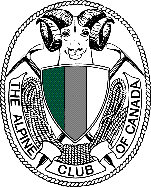
The Alpine Club of Canada (ACC) is an amateur athletic association with its national office in Canmore, Alberta that has been a focal point for Canadian mountaineering since its founding in 1906. The club was co-founded by Arthur Oliver Wheeler, who served as its first president, and Elizabeth Parker, a journalist for the Manitoba Free Press. Byron Harmon, whose 6500+ photographs of the Canadian Rockies in the early 20th century provide the best glimpse of the area at that time, was official photographer to the club at its founding. The club is the leading organization in Canada devoted to climbing, mountain culture, and issues related to alpine pursuits and ecology. It is also the Canadian regulatory organization for climbing competition, sanctioning local, regional and national events, and assembling, coaching and supporting the national team.
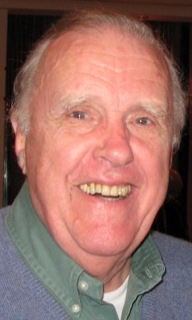
Ian McNaught-Davis was a British television presenter best known for presenting the BBC television series The Computer Programme, Making the Most of the Micro and Micro Live in the 1980s. He was also a mountaineer and alpinist. He was managing director of the British subsidiary of Comshare Inc.

Competition climbing is a form of regulated rock climbing competition held indoors on purpose-built artificial climbing walls. The three competition climbing disciplines are lead climbing, bouldering, and speed climbing. The result of multiple disciplines can be used in a "combined" format to determine an all-round winner. Competition climbing is sometimes called "sport climbing", which is the name given to pre-bolted lead climbing.
The Irish Mountaineering Club is a mountaineering club whose activities include climbing. The club has over 200 members.

Skyrunning is a sport of mountain running above 2,000 metres (6,600 ft) where the minimum average incline is 6% over the total distance and at least 5% has an incline of 30% or more. The climbing difficulty does not exceed II grade UIAA. Poles, crampons, and hands may be used to aid progress. The governing body is the International Skyrunning Federation.
The Lairig Club, commonly referred to as "The Lairig" is the University of Aberdeen’s Mountaineering Club and was founded in the early 1940s. Members take part in a wide range of activities from hillwalking and sport climbing right through to winter climbing, Ski touring and alpinism. Due to the university calendar and its close proximity to reliable venues winter mountaineering is the main focus of the club along with hillwalking. Over the winter season the club prides itself as being one of the most active university mountaineering clubs in the UK and works with the mission statement: "To give the opportunity to participate in, and develop the skills for, safe mountaineering in all conditions." The club has a long and distinguished history painted by famous names such as Tom Patey and Andy Nisbet, two of Scotland's most prolific new routers, who learnt their trade in the Lairig.
Joss Lynam was an Irish civil engineer who was well known as a mountaineer, hillwalker, orienteer, writer and sports administrator. He was one of Ireland's most influential figures in outdoor activities.
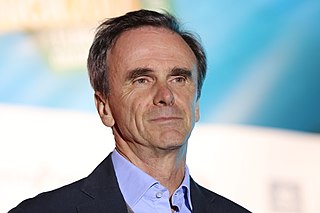
Marco Maria Scolaris is a professional photographer and former amateur rock climber who founded the International Federation of Sport Climbing (IFSC), which is the international governing body for competition climbing in the disciplines of lead climbing, bouldering, and speed climbing.

Artimes Farshad Yeganeh is an Iranian rock climber who has specialized in both competition climbing, and outdoor sport climbing and bouldering. He has been climbing for 30 years as a professional climber, a member of the Iranian National climbing team for many years, as a route setter in many national, continental, and world cups and championships, and Head Coach of the Iranian National climbing team for 6 years. He also participates in sport climbing and bouldering competitions and is one of the most famous Iranian climbers.

The Armenian Mountaineering and Hiking Federation, also known as the Armenian Federation of Alpinism and Mountain Tourism, is the regulating body of mountaineering, hiking, and climbing in Armenia. The headquarters of the federation is located in Yerevan.
References
- 1 2 "Members Federation". UIAA . Retrieved 1 June 2021.
- 1 2 "Staff". Mountaineering.ie. Retrieved 1 June 2021.
- ↑ "2018 News Items". Muntaineering.ie. Retrieved 1 June 2021.
- ↑ Long, Steve (2014). Hillwalking: The official handbook of the Mountain Training walking schemes. Vertebrate. p. 144. ISBN 978-0993033704.
- 1 2 "'Dogs not welcome in upland areas' – Mountaineering Ireland warns walkers". Independent.ie . Retrieved 1 June 2021.
- 1 2 "Affiliated to". Mountaineering.ie. Mountaineering Ireland. 2021. Retrieved 1 June 2021.
- ↑ "Mountaineering Ireland". International ISBN Agency . 2021. Retrieved 1 June 2021.
- ↑ Merrick, Robin, ed. (1971). "Irish Mountaineering 1971" (PDF). Irish Mountaineering Club .
- ↑ "Twelve Bens : hill walkers and rock climbers guide". National Library of Ireland catalogue. F.M.C.I. guide. Federation of Mountaineering Clubs of Ireland. 1971. Retrieved 1 June 2021.
- 1 2 "History". Mountaineering Ireland. 2008. Archived from the original on 12 February 2012. Retrieved 1 June 2021.
- ↑ "Mountaineering Ireland joins the Olympic movement". Mountaineering Ireland. 22 June 2018. Retrieved 1 June 2021.
- 1 2 Siggins, Lorna. "Irish Peaks — a glossy new guide to Ireland's mountains". Sunday Times (Ireland edition) . Retrieved 1 June 2021.
- ↑ "A new litter-picking initiative is urging people to pick up one piece of litter". AgriLand.ie. 11 May 2021. Retrieved 1 June 2021.
- ↑ "Let's Walk On Wednesday!". RTÉ.ie . 18 May 2021. Retrieved 1 June 2021.
- ↑ "National Climbing Competitions: 2021 and Beyond". TheBMC.co.uk . Retrieved 1 June 2021.
- ↑ "Mountain Training Board Irland". Mountain Training. Retrieved 1 June 2021.
- ↑ "How is Mountain Training funded?". Mountain-Training.org. Retrieved 1 June 2021.
- ↑ "international Mountain leader". Mountain Training. MountainTraining.org. Retrieved 1 June 2021.
- ↑ "Indoor Climbing". Mountaineering Irland.
- ↑ "Talent Development". Mountaineering Ireland.
- ↑ "Members Federation" (en). International Federation of Sport Climbing.
- ↑ "EURANDO 2011 Members". European Ramblers' Association. 2011. Retrieved 1 June 2021.
- ↑ "Members". Federation of Irish Sports. Retrieved 1 June 2021.
- ↑ "Members". Northern Ireland Environmental. Retrieved 1 June 2021.
- ↑ "Representative Members". Northern Ireland Sports Forum.
- ↑ Spriggins, Zoe (26 November 2020). "National Climbing Competitions: 2021 and Beyond". TheBMC.co.uk . Retrieved 2 June 2021.
- ↑ "ANNUAL REVIEW 2010" (pdf). Mountaineering Ireland. 2010. Retrieved 10 April 2014.
